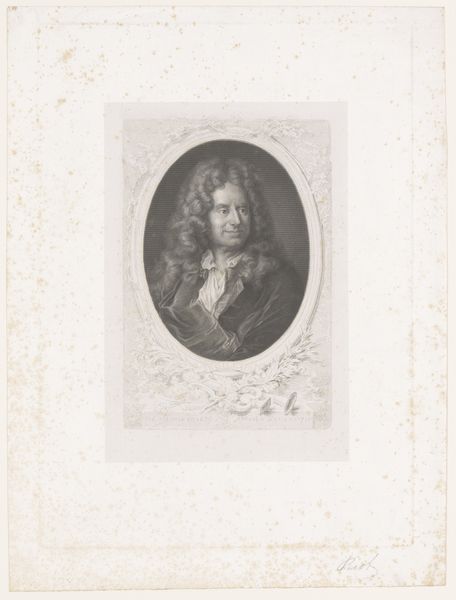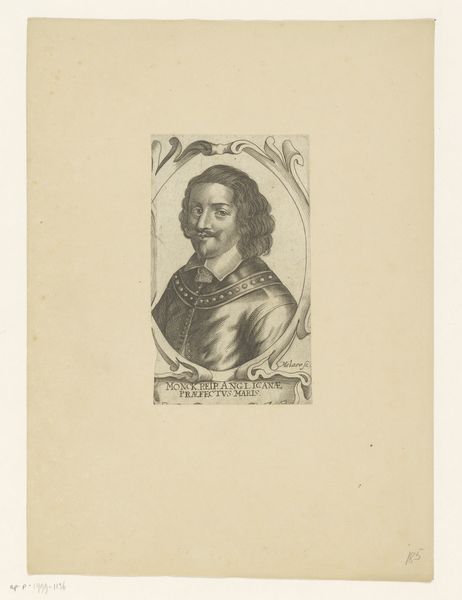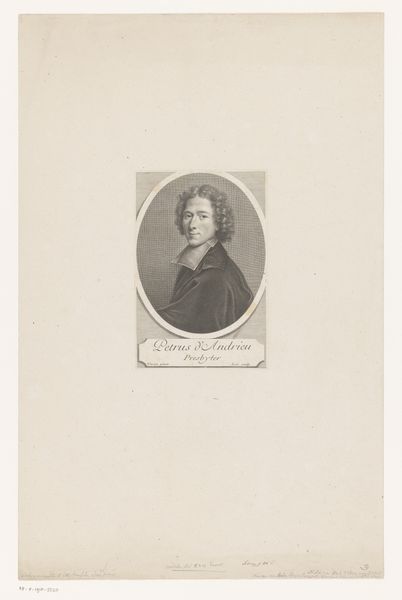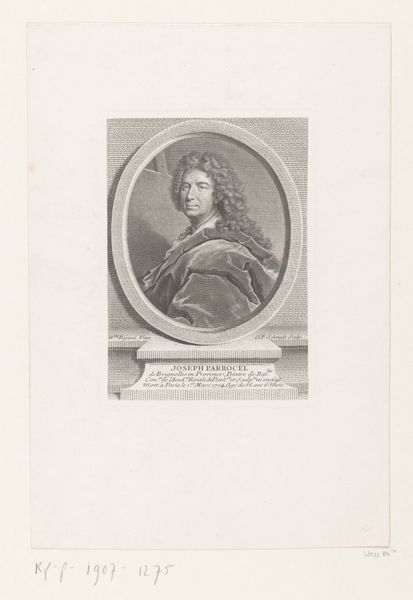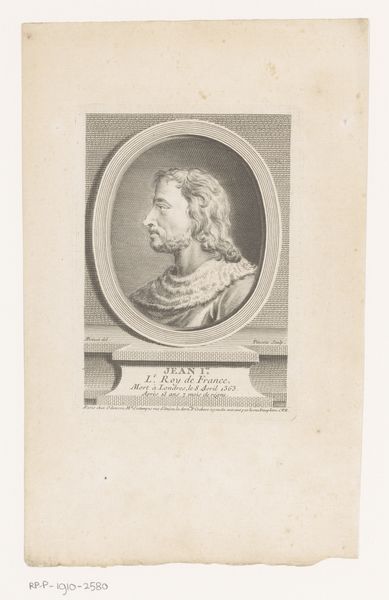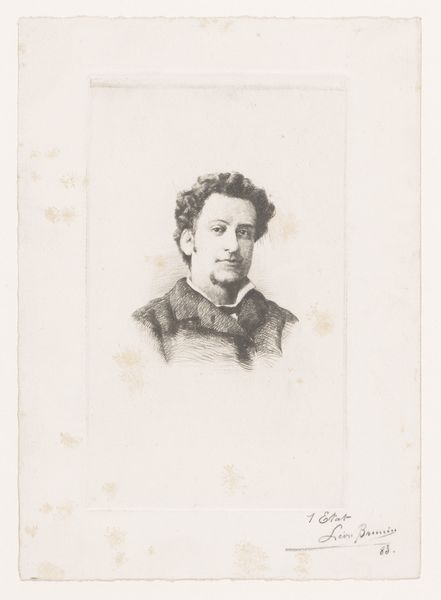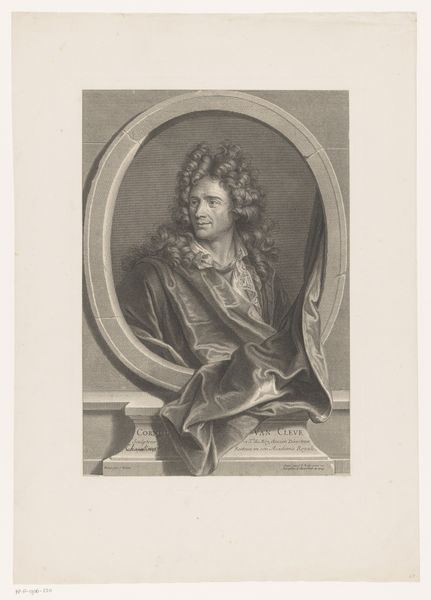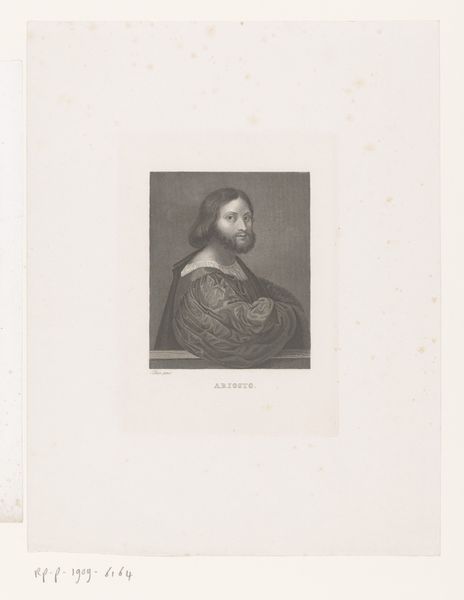
drawing, paper, engraving
#
portrait
#
drawing
#
neoclacissism
#
paper
#
engraving
Dimensions: height 201 mm, width 125 mm
Copyright: Rijks Museum: Open Domain
This stipple engraving of Anthony van Dyck was made by Friedrich Fleischmann, probably in the early 19th century. The stipple engraving process is fascinating. Unlike traditional line engraving, which relies on clear, continuous lines, stipple engraving uses a pattern of tiny dots to create tone and form. Think of it as a kind of pointillism, but done with the burin on a copper plate. The density and distribution of the dots determine the darkness or lightness of an area, allowing for subtle gradations and soft effects. This method allowed Fleischmann to capture the texture of Van Dyck’s hair and clothing, and the subtle play of light on his face. It's a labor-intensive process, demanding incredible patience and precision from the engraver. Fleischmann masterfully worked within the graphic vocabulary available to him at the time, creating a compelling image. The print sits within a much wider world of reproductive printmaking. It reminds us that many artists made their livings translating paintings into affordable prints. This portrait shows the immense skill required to make these kinds of images and how they blur the boundary between craft and fine art.
Comments
No comments
Be the first to comment and join the conversation on the ultimate creative platform.




